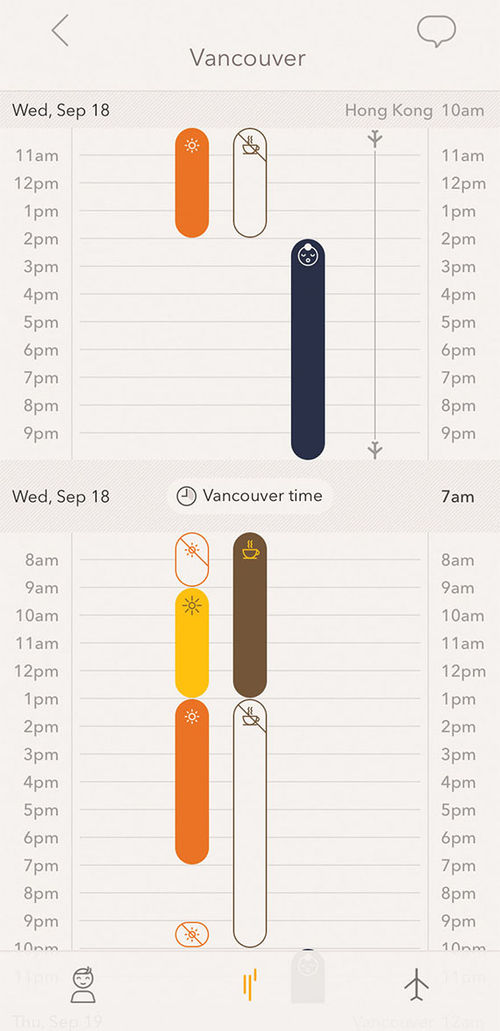
Andrea Zelinski
I considered myself a time traveler years ago during my first big road trip through the American Southwest. Driving from Tennessee to Colorado then Arizona, I was often confused about what time it was and would comically declare, "I don't know when I am!"
Fast-forward to today, and on a regular basis I barrel through air space in a plane crossing multiple time zones. Time has never been so fluid, nor have I ever had so much jet lag.
When I told a friend I was flying to China September to sail on a 10-day Viking cruise, he suggested I try Timeshifter, an app that aims to reduce jetlag by reprograming the 24-hour circadian clock in my brain.
According to Timeshifter, we disrupt nearly all our biological systems when we change time zones so fast. Our sleep, mood, and performance suffer, as does our melatonin release, temperature regulation and the function of important organs, like the heart, lungs, kidneys, and digestive system.
I've tried all types of strategies to avoid jet lag when zipping across the planet: I forego the free alcohol, and I change my watch to my new time zone as soon as I'm seated on the plane and behave accordingly. But this app suggested the key to successfully adjusting to new time zones is to reset our circadian clock, namely by carefully timing when we expose ourselves to light (and when we avoid it) three days before arriving at a new destination.
How Timeshifter worked
After downloading the app, I entered details of my flight from Chicago to Shanghai for the Viking cruise and my return flight from Hong Kong to Vancouver, B.C., where I was hopping on a short cruise with HX. The app built me a graph with easy-to-understand directions showing when I should seek or avoid light the best I could, when I should use caffeine and when I should sleep.
It sent me push notifications three days before that first flight with instructions to limit light exposure for a prescribed number of hours in the morning. And the app makes clear that the better you follow the directions, the better it works. For me, that meant wearing sunglasses in the house and keeping the blinds drawn. I felt silly working inside with sunglasses on, but I followed the directions as best as I could.
When I arrived in Shanghai for the Viking cruise, I had enough energy to get through the day and found myself nodding off at 10 p.m., right on schedule. The notifications continued for a few days after my arrival, but I'd say after my first full day in Shanghai, I felt all right. I ventured around Shanghai by foot briefly during the day and saw an acrobatic performance that night.
The more I kept with the plan, the more my energy level felt remarkably normalized, and I naturally began waking up at daybreak.

An image of Andrea Zelinski's Timeshifter app showed a graph with directions showing when she should seek or avoid light, should use caffeine and sleep. Credit: Andrea Zelinski
It was the same drill on my travels back to North America, with push notifications urging me to limit or increase my light exposure, carefully time my caffeine consumption and use melatonin to help sleep the last eight hours of my flight to Vancouver (the app specifically asked if I was comfortable using it). I probably slept five or six hours and rested with my eyes closed for the rest.
The directions about when to drink caffeine were critical. I grabbed a coffee right before lunch in Vancouver, right around the time I felt I could have traded the meal for a nap. But after eating, I decided to walk to the pier to meet my next cruise ship and was pleased to catch a second wind of energy by the time I reached the Fridtjof Nansen.
Falling down on the last leg
I figured my time-shifting transitions were over by the end of that two-night cruise. I had transitioned back to North America, after all, and was feeling great. The next flight home, just two hours ahead, would be a cinch.
Or so I thought. By the second night of the HX cruise I had veered off-course and was going to bed late yet still waking up early. I hadn't entered my flights for my return to a Central time zone, so I had no guide for the final transition.
And when I returned home, my circadian rhythm was off and the jet lag wore on me, leaving me unable to shake the feeling that I was tired.
Perhaps I caught a cold on the plane. Or I was just naturally tired from a lot of travel. So, the jury is still out on whether my post-trip crash was because I hadn't relied on Timeshifter for the final leg.
But it seemed to me that the app was a lifeline as long as I was diligently using it. So clearly, more data is needed. The first trip on the app was free to try out, and it's $24.99 for a yearly subscription after that. Next trip, I'll spring for the subscription, and I'll enter all the flights.